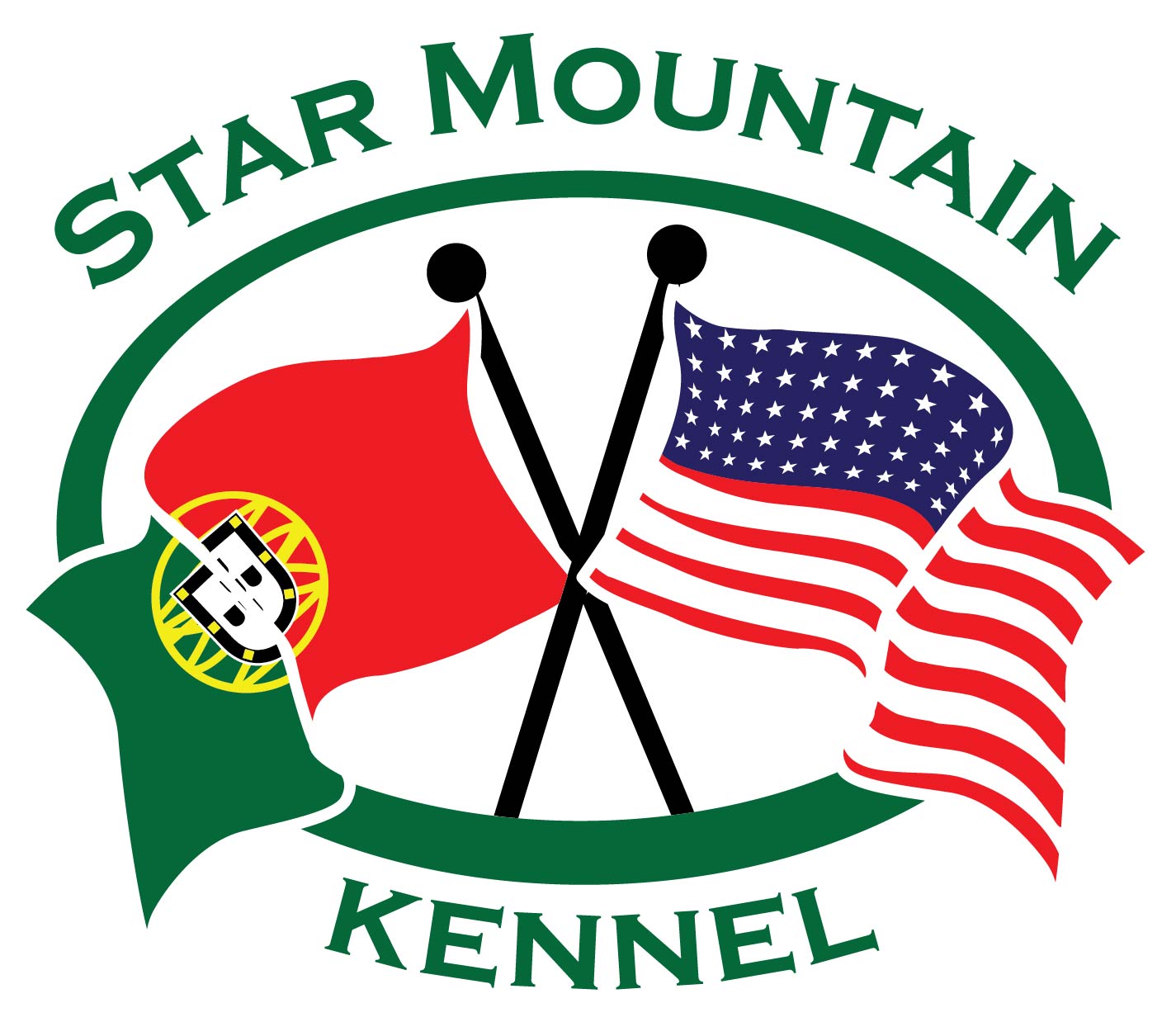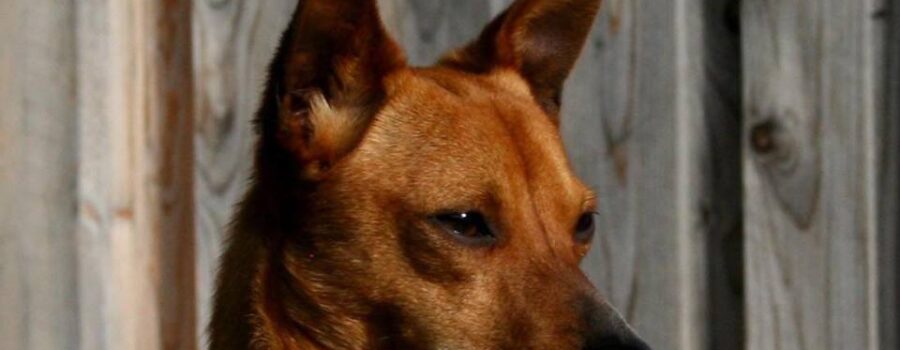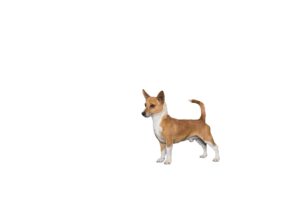The AKC standard for the Portuguese Podengo Pequeno –

StarMountain Patch – Portuguese Podengo Pequeno
Official Standard of the Portuguese Podengo Pequeno General Appearance: A wedge shaped head (a four sided pyramid) with erect ears, a sickle shaped tail, a sound skeleton, well muscled: very lively and intelligent, sober and rustic. This is a breed of moderation. Size and Proportion: Size- The height is 8 to 12 inches and the weight is 9 to 13 pounds. Proportions – The distance from the withers to the bottom of the chest is one half the total height. The length from the point of shoulder to the point of buttocks is 20 percent longer than the height. Head: Lean broad based wedge shaped as a four-sided pyramid when viewed from the top or in profile. A large base and a definite pointed muzzle. Skull of the Portuguese Podengo Pequeno – Flat, almost straight in profile. Prominent brow bone. Barely perceptible frontal furrow. Relatively flat between the ears. Prominent occiput. Planes: The plane of the muzzle very slightly diverges downward from the plane of the skull. Stop – Barely defined. Eyes – Very lively expression with small almond shape set slightly oblique. Not rounded or prominent. Eye color ranges from honey to dark brown in accordance with the coat. Muzzle – Curved, when seen from the top. A straight profile which is shorter than the skull, broader at the base, and narrowing to the tip. Cheeks – Lean and obliquely set. Nose – Tapered, obliquely truncated, and prominent at the tip; black or darker colored than the coat. Lips – Close fitting, thin, firm and well pigmented. Jaw/Teeth – Scissor bite. Normal occlusion of both jaws. Ears – Set obliquely at the level of the eyes, straight, with high mobility, upright or tilted forward when attentive. Pointed, triangular and wider at the base, thin, longer than the width at the base. Portuguese Podengo Pequeno Neck, Topline, Body: Neck – A harmonious transition from head to body. Straight with a slight arch at the nape. Medium in length, well proportioned, strong and muscled. Very dry without dewlaps. Topline – Level. Withers – Only slightly visible. Back – Straight and long. Loin – Level, broad and well muscled. Croup – Straight or very slightly sloping and medium size. Well muscled. Chest – The chest reaches to the elbow. It is long and of medium width. The ribcage is slightly sprung. Moderate fore chest. Underline – The belly is lean and slightly tucked up. Tail – Medium high set and of medium length. Strong, thick, and tapered with a lightly feathered underside. At rest it falls curved and reaches to the hock joint. In action it rises to the horizontal slightly curved or vertical in the shape of a sickle. A curled tail is a serious fault. Forequarters: Shoulder – Blade moderately laid back. Shoulder and upper arm angle is moderate. Elbow -Well tucked in. Forearm – Straight, long, muscled. Pastern – Short, lean, strong and slightly sloping. Feet – Oval, strong, tight, slightly arched. Strong nails and tough firm pads. Hindquarters: Upright when seen from the back and side. Well muscled and lean. Upper thigh – Long and of medium width, muscled. Stifle joint – Moderate angulation. Second thigh – Long, lean, strong, and well muscled. Hock joint – Medium height, lean, strong, moderately angled. Rear pastern – Strong, short, straight. Without dewclaws. Hind feet – As in front. Coat: There are two varieties of the Portuguese Podengo Pequeno; Smooth coat which is short and very dense. Wire coat (rough) is long and harsh. The hair on the muzzle is longer (bearded) on the wire coat variety. The wire coat is not as dense as the smooth variety. Both varieties are without undercoat. Skin on both varieties is thin and close fitting. A very rustic breed shown naturally. Groomed but not trimmed or sculpted. Dogs whose coat has been altered by excessive sculpting, clipping or artificial means shall be penalized as to be effectively eliminated from competition. A silky coat is a fault.
Color of the Portuguese Podengo Pequeno: Yellow or Fawn. Light, medium or dark shades are acceptable. The color can be solid or with white markings or white with markings of the above colors. The following colors are accepted but not preferred. Black or brown, as solid colors or with white markings. White with markings of the accepted colors. Skin: Mucus membranes are preferably dark pigmented or always darker than the coat. Skin is thin and tight. Gait: Light trot, easy and agile movements. Temperament: Very lively and intelligent. A natural rabbit hunter either alone or in a small pack. They seek rabbits among rocks and thick shrub. A companion who willingly serves as a watchdog. Faults: Behavior – Signs of shyness. Back skull/muzzle – Parallel planes. Jaws – Level bite. Nose – Partial lack of pigment. Neck – Ewe necked or severely arched. Body – Arched topline. Croup – Excessive slope. Coat – Silky and/or with undercoat. Serious Faults: Skull/Muzzle – Convergent planes. Nose – Total lack of pigment. Ears – Rounded. Belly – Excessive tuckup. Tail – Curled. Disqualifications: Behavior – Aggressive or overly shy. Eyes – Of different color. Jaws – Undershot or overshot. Ears – Folded or hanging. Color – Brindle, Black and Tan, Tricolor, Solid White



